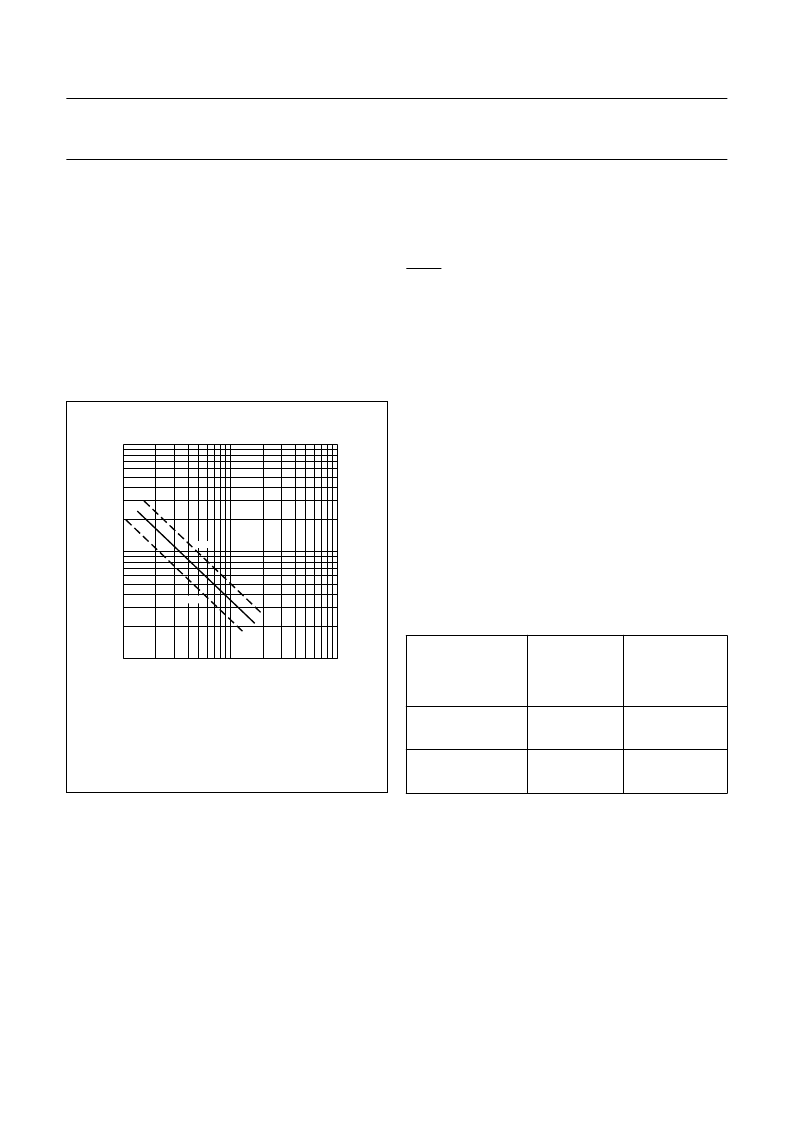- 您現(xiàn)在的位置:買(mǎi)賣(mài)IC網(wǎng) > PDF目錄382382 > PCF8576 (NXP Semiconductors N.V.) Universal LCD driver for low multiplex rates PDF資料下載
參數(shù)資料
| 型號(hào): | PCF8576 |
| 廠(chǎng)商: | NXP Semiconductors N.V. |
| 英文描述: | Universal LCD driver for low multiplex rates |
| 中文描述: | 通用LCD驅(qū)動(dòng)器的低復(fù)用率 |
| 文件頁(yè)數(shù): | 14/40頁(yè) |
| 文件大?。?/td> | 243K |
| 代理商: | PCF8576 |
第1頁(yè)第2頁(yè)第3頁(yè)第4頁(yè)第5頁(yè)第6頁(yè)第7頁(yè)第8頁(yè)第9頁(yè)第10頁(yè)第11頁(yè)第12頁(yè)第13頁(yè)當(dāng)前第14頁(yè)第15頁(yè)第16頁(yè)第17頁(yè)第18頁(yè)第19頁(yè)第20頁(yè)第21頁(yè)第22頁(yè)第23頁(yè)第24頁(yè)第25頁(yè)第26頁(yè)第27頁(yè)第28頁(yè)第29頁(yè)第30頁(yè)第31頁(yè)第32頁(yè)第33頁(yè)第34頁(yè)第35頁(yè)第36頁(yè)第37頁(yè)第38頁(yè)第39頁(yè)第40頁(yè)

1998 Feb 06
14
Philips Semiconductors
Product specification
Universal LCD driver for low multiplex
rates
PCF8576
6.5
Oscillator
6.5.1
I
NTERNAL CLOCK
The internal logic and the LCD drive signals of the
PCF8576 are timed either by the internal oscillator or from
an external clock. When the internal oscillator is used,
pin OSC should be connected to pin V
SS
. In this event, the
output from pin CLK provides the clock signal for
cascaded PCF8566s in the system.
Where resistor R
osc
to V
SS
is present, the internal oscillator
is selected. The relationship between the oscillator
frequency on pin CLK (f
clk
) and R
osc
is shown in Fig.9.
6.5.2
E
XTERNAL CLOCK
The condition for external clock is made by connecting
pin OSC to pin V
DD
; pin CLK then becomes the external
clock input.
The clock frequency (f
clk
) determines the LCD frame
frequency and the maximum rate for data reception from
the I
2
C-bus. To allow I
2
C-bus transmissions at their
maximum data rate of 100 kHz, f
clk
should be chosen to be
above 125 kHz.
A clock signal must always be supplied to the device;
removing the clock may freeze the LCD in a DC state.
Fig.9 Oscillator frequency as a function of R
osc
.
f
clk
3.4
10
7
×
R
osc
kHz
(
)
≈
10
4
MBE531
10
3
10
2
10
10
3
10
2
fclk
(kHz)
R
(k
)
osc
min
max
6.6
Timing
The timing of the PCF8576 organizes the internal data flow
of the device. This includes the transfer of display data
from the display RAM to the display segment outputs.
In cascaded applications, the synchronization signal
SYNC maintains the correct timing relationship between
the PCF8576s in the system. The timing also generates
the LCD frame frequency which it derives as an integer
multiple of the clock frequency (see Table 3). The frame
frequency is set by the MODE SET commands when
internal clock is used, or by the frequency applied to
pin CLK when external clock is used.
The ratio between the clock frequency and the LCD frame
frequency depends on the mode in which the device is
operating. In the power-saving mode the reduction ratio is
six times smaller; this allows the clock frequency to be
reduced by a factor of six. The reduced clock frequency
results in a significant reduction in power dissipation.
The lower clock frequency has the disadvantage of
increasing the response time when large amounts of
display data are transmitted on the I
2
C-bus.
When a device is unable to digest a display data byte
before the next one arrives, it holds the SCL line LOW until
the first display data byte is stored. This slows down the
transmission rate of the I
2
C-bus but no data loss occurs.
Table 3
LCD frame frequencies
6.7
Display latch
The display latch holds the display data while the
corresponding multiplex signals are generated. There is a
one-to-one relationship between the data in the display
latch, the LCD segment outputs and one column of the
display RAM.
6.8
Shift register
The shift register serves to transfer display information
from the display RAM to the display latch while previous
data is displayed.
PCF8576 MODE
FRAME
FREQUENCY
NOMINAL
FRAME
FREQUENCY
(Hz)
Normal mode
64
Power-saving mode
64
f
2880
------------
f
480
---------
相關(guān)PDF資料 |
PDF描述 |
|---|---|
| PCF8576C | Universal LCD driver for low multiplex rates |
| PCF8576CH | Universal LCD driver for low multiplex rates |
| PCF8576U | Universal LCD driver for low multiplex rates |
| PCF8577C | LCD direct/duplex driver with I2C-bus interface |
| PCF8577CP | LCD direct/duplex driver with I2C-bus interface |
相關(guān)代理商/技術(shù)參數(shù) |
參數(shù)描述 |
|---|---|
| PCF8576_01 | 制造商:PHILIPS 制造商全稱(chēng):NXP Semiconductors 功能描述:Universal LCD driver for low multiplex rates |
| PCF8576C | 制造商:PHILIPS 制造商全稱(chēng):NXP Semiconductors 功能描述:Universal LCD driver for low multiplex rates |
| PCF8576C_10 | 制造商:PHILIPS 制造商全稱(chēng):NXP Semiconductors 功能描述:Universal LCD driver for low multiplex rates |
| PCF8576CH | 制造商:PHILIPS 制造商全稱(chēng):NXP Semiconductors 功能描述:Universal LCD driver for low multiplex rates |
| PCF8576CH/1 | 功能描述:LCD 驅(qū)動(dòng)器 160 SEGMENT LCD SEGMENT DRIVER RoHS:否 制造商:Maxim Integrated 數(shù)位數(shù)量:4.5 片段數(shù)量:30 最大時(shí)鐘頻率:19 KHz 工作電源電壓:3 V to 3.6 V 最大工作溫度:+ 85 C 最小工作溫度:- 20 C 封裝 / 箱體:PDIP-40 封裝:Tube |
發(fā)布緊急采購(gòu),3分鐘左右您將得到回復(fù)。